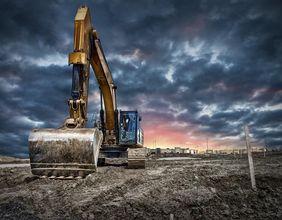Summary
- The Congressional Budget Office expects real GDP to be down by 11.2% in 2Q 2020.
- A modest recovery is likely to kick in 3Q 2020.
- The unemployment rate would peak in 3Q 2020 at 15.8%.
- Long term interest rates would average 1% 2020.
- Lower inflation and higher unemployment would keep the rates lower through 2021.
The Congressional Budget Office (CBO) has updated the economic forecast for 2020 and 2021 for the initial release in April. Projections are based on the information available until May 12. Under the new estimates, the agency has assumed that the US Parliament will pass no additional laws/emergency relief bills.
Federal and State Governments have implemented measures to prevent the rapid transmission of the virus, prompting large scale shutdowns and restrictions on people movements – collectively referred to as social distancing measures.
Related: Trump-Twitter Spat: Is this honking the Share Price of any stock
In April, these preventive measures were at the peak, effectively disrupting economic activity and causing job losses. These actions have induced large scale job losses that ended the expansion, which was continuing since World War II.
The CBO notes that between February and April, around 25 million people lost their jobs, while the size of the labour force fell by 8 million. It is forecasting an unemployment rate of 15.8% at the end of the third quarter. Post 3Q, the unemployment picture would normalise gradually.
In the second half of 2020, the body is expecting a revival in the economic activity as social distancing measures ease in the country. Subsequently, employment would pick-up from the third quarter.
Since the risks of a second wave are higher, it assumes that social distancing would continue to some extent, suppressing labour market and economic activity for some time. Due to subdued economic growth, labour market, demand for lower risk-assets and market conditions, the interest rate would remain low.
Social distancing measures have curtailed or closed business operations in the service sector, while those measures have impacted manufacturing sector through a decrease in demand and supply chain issues.
Public health-related measures and restrictions have impacted consumer spending as businesses furloughed employees or ceased operations. Industries that have suffered large scale job losses include retail trade, health services, leisure, and hospitality.
Regions that rely on tourism and hospitality have suffered a higher level of unemployment, but the effects of the pandemic have varied across the region and industries. At the same time, the lower income group has suffered extensive damage as the hardest-hit industries employ low-wage workers.
The agency notes that real consumer spending, which is around 66-67% of GDP, fell 7.3% in March as demand for goods and services was lower and businesses ceased operations. The Bureau of Economic Analysis estimated that consumer spending fell by 28% between March 21 and March 31 -when social distancing was in place in all states.
It is highlighted that investment had been lacklustre in the second quarter. There had been a significant fall in oil production. Construction activities fell by record numbers in March, and a drop in construction jobs was evident in April. Automobile sales plunged, and mortgage application also fell during the period.
The body noted that the pandemic related legislation passed by the congress would shoot up the fiscal deficit by US$2.2 trillion and US$0.6 trillion in 2020 and 2021, respectively. It expects that the legislation will cushion the economic blow to some extent.
Related: China’s Economic Outlook: Country faces double whammy of COVID-19 and trade war with the US
Economic Projections
The agency forecasts that the most impact of the social distancing measures would be visible in the second quarter, and economic activity would starting from the third quarter of 2020. New legislation passed by the Government would result in a moderate rebound in the economy.

The agency forecasts that GDP would shrink by 11.2% in the second quarter of 2020. GDP growth in the second half of 2020 would average at 15.8% at annualised rates. In 2021, it expects GDP to expand by 4.2% on last quarter vs prior corresponding period.
In the second quarter of 2020, the consumer is projected to decline by 11.6%, stemming from lower household spending in areas that require close interactions. However, the body forecasts consumer spending will pick-up in 2H 2020, exhibiting annualised growth rate of 22.6%. It expects consumer spending to grow at 2.9% in the last quarter of 2021.
The CBO expects business fixed investment to fall by 15.8% in 2020, owing to lower demand for goods and services. In 2021, it forecasts business fixed investments to grow by 13.4%, and inventories would lower in the last quarter compared to two-year ago.
Residential investments are expected to decrease by 13.8% in 2020 and are expected to pick-up in 2021 by 16.7%, owing to lower mortgage rates. The agency expects net exports to fall substantially in 2Q 2020 and the decrease in exports would be higher than the decline in imports.
Labour markets are expected to suffer the steepest decline since the 1930s in the second quarter of 2020, indicating an average unemployment rate of 15%. However, the labour market will likely stabilise, starting from 3Q 2020. In 4Q 2021, it anticipates the unemployment rate to reach 8.6%.

The agency expects that inflation will fall over the next two years as the supply of goods and services would outweigh the demand. In 2Q 2020, the inflation in personal consumption expenditure would be -1.2%. In 4Q 2021, the rise in personal consumption expenditure is expected to rise by 1.5% over the same period last year.

Interest rates on US Treasuries are expected to remain low until 2021 due to weak labour market and subdued inflation. It expects long term interest would rise moderately in 2021. The agency anticipates US 10-year note to average 1% in 2021.






